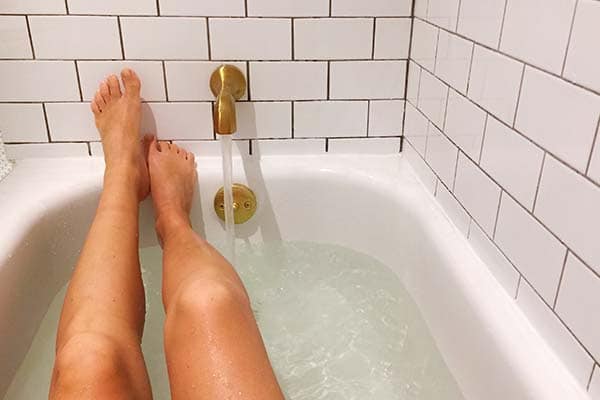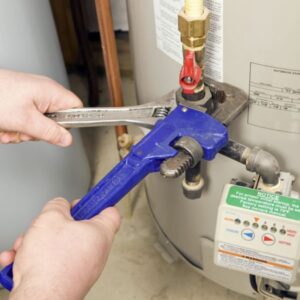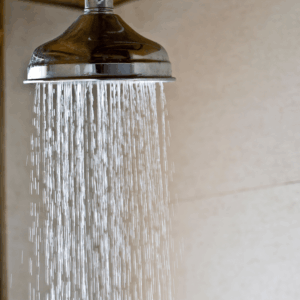Tankless electric hot water single phase systems deliver hot water instantly without a storage tank. These systems heat water only when needed, unlike traditional storage tanks that maintain preset temperatures continuously. Single-phase electric water heaters are well-suited for homes and small businesses, while three-phase systems offer property owners a choice.
Australian homeowners looking to install electric instant hot water systems in Perth and other locations should understand their power supply options clearly. Three-phase hot water systems prove more economical than single-phase alternatives over time, though actual costs vary based on electricity rates and system performance. These systems differ significantly in their energy usage – lower BTU systems consume about 2-4 kWh daily, while higher BTU models use up to 7-8 kWh per day. A system using 5 kWh daily costs roughly $1 per day or $7 weekly at Melbourne’s rate of $0.20 per kWh. This piece explains how instant electric water heaters operate and helps you select the ideal power configuration for your Australian home.
Understanding Instantaneous Electric Hot Water Systems
Electric instantaneous hot water systems work quite differently from traditional storage tanks. These systems give you hot water right when you need it through a quick heating process instead of keeping a tank of pre-heated water.
How does an instant electric water heater work?
These heaters use a simple but effective heating method. The unit’s flow sensors detect water movement when you turn on a hot water tap and start heating right away. Cold water flows into the unit through a heat exchanger – usually a coiled copper pipe that helps heat water quickly with its large surface area.
The electric models use heating elements made from copper or nickel alloy with wire running through them. Heat transfers directly to the passing water when electricity runs through these elements and creates friction. Most units come with two heating elements to make sure you get enough hot water.
These systems heat water differently from regular electric water heaters with tanks. The water heats up as it moves through the unit and goes straight to your tap without waiting.
What makes a system ‘instantaneous’?
These systems heat water on demand without storing it. The compact units pack enough heating power to warm incoming cold water as it flows, so you don’t need a hot water cylinder.
The system turns on only when you open hot water taps and shuts off right after you close them. This saves energy since it doesn’t keep unused water hot. You can save up to 30% on energy and water costs compared to hydraulically controlled systems. The best part? You get endless hot water because there’s no tank to empty. These systems work great for homes that use different amounts of hot water throughout the day.
Common use cases in Australian homes
Australian homes use these electric systems in several ways:
- Space-constrained environments: These compact, wall-mounted systems fit perfectly in smaller homes and apartments where space is tight.
- Intermittently used properties: Holiday homes and granny flats benefit because the system runs only when needed, which saves energy when nobody’s home.
- Single-point applications: Smaller households often use these models for specific spots like bathroom sinks or kitchen taps.
- Supplementary systems: The units work well as boosters for appliances that need lots of hot water, such as dishwashers or washing machines.
- Solar-complementary systems: These systems pair nicely with solar hot water units by providing backup heat when solar generation falls short.
These electric systems offer great benefits for many Australian households. You get energy savings, more space, and hot water whenever you need it. Just remember to check your electrical setup. Larger home models often need three-phase power because they use quite a bit of electricity.
What Is Single-Phase vs. Three-Phase Power?
Power supply setup makes a big difference in how well electric hot water systems work. Knowing the key differences between single-phase and three-phase power helps homeowners choose the right system that meets their hot water needs.
Single-phase power explained for residential use
Single-phase power works through a two-wire alternating current (AC) circuit with one active (hot) wire and one neutral wire. Most Australian homes use this standard setup for everyday needs like lighting and small appliances. The current flows between the active wire and neutral wire through connected appliances.
The electrical current in single-phase systems changes direction and strength to create a sinusoidal waveform. The voltage switches direction 50 times per second in Australia. The two current-carrying legs stay 180 degrees apart. This creates brief power gaps that regular household devices can handle without issues.
Standard homes receive 230V from a single-phase power supply. This gives enough electricity to run common fixtures and appliances. Homes of small to medium size with normal hot water usage work well with this setup.
Three-phase power in commercial and high-demand settings
Three-phase power works differently from single-phase. It uses three separate currents that are spaced evenly through one complete cycle. The system runs on three active wires and one neutral wire, with currents 120 degrees apart. One line peaks while the other two keep delivering partial power.
This design gives a clear advantage. Power flows steadily because one phase always delivers substantial output. Three-phase systems provide constant power without the ups and downs you see in single-phase power. The total power stays steady throughout the cycle.
Australian three-phase power systems run at 400V (230V per phase). This setup delivers almost double the power of similar single-phase systems but doesn’t need twice the wiring.
Why power phase matters for hot water systems
Power phase setup affects how well instantaneous electric hot water systems perform. Single-phase systems work fine for regular households. Yet problems can show up as usage grows.
Three-phase systems spread electricity better across multiple wires. This balanced spread creates steady power that works great for large properties or commercial buildings needing lots of hot water.
Single-phase instantaneous electric hot water systems might struggle with high household demands. These heaters just need too much power to heat water quickly. Single-phase setups might not deliver enough electricity during peak times. This leads to slower water flow or water that’s not hot enough.
Three-phase electric hot water systems heat faster and work better. They draw power evenly across phases for better efficiency and reliability. Large homes, multi-storey buildings, and commercial spaces benefit from this setup.
Three-phase systems shine during the time demand peaks. Homes with multiple bathrooms or lots of simultaneous hot water use see the biggest advantage. The higher upfront cost of three-phase installation pays off through faster heating, better performance, and less wear on the system.
Performance Differences Between Single and Three-Phase Systems
Hot water systems in Australian homes work differently based on whether they’re single-phase or three-phase configurations. These differences affect how we use hot water every day.
Flow rate and temperature consistency
Flow rate is a key difference between single-phase and three-phase instantaneous electric hot water systems. Three-phase systems give you strong water flow without any limits. You can run multiple taps or showers at once without issues. Single-phase instant hot water systems don’t deliver water as quickly as their three-phase counterparts.
The temperature stays more stable in three-phase hot water systems. They spread electricity evenly across three active wires and one neutral wire. This balanced power supply keeps water temperature steady while you use it. Single-phase systems work well for smaller hot water needs but might not keep steady temperatures when you use multiple outlets or run them for a long time.
Recovery rate under high demand
The recovery rate shows how quickly a system heats water. This tells you how many litres of hot water you’ll get in an hour, starting with cold water. This rate matters most during peak usage times for instantaneous systems.
Three-phase electric hot water systems excel at recovery when you just need lots of hot water. They heat water faster and work better when multiple taps are running. These systems heat more quickly, perform better, and last longer in high-demand situations.
Single-phase electric instant hot water systems often can’t keep up during peak usage. These systems heat water on demand and just need substantial power – more than single-phase setups can deliver fast enough to keep water hot.
Limitations of single-phase in large households
Larger Australian households face these issues with single-phase instantaneous systems:
- Power delivery falls short during busy times, leading to lukewarm water or weak flow
- Multiple hot water uses at once don’t work well
- The system takes too long to recover after heavy use
These problems show up most in homes with several bathrooms or during morning rushes when everyone needs hot water. Single-phase systems run out of hot water quickly or take ages to recover in these situations.
Three-phase systems distribute power more efficiently. This means faster heating and better performance, making them perfect for bigger households or homes with multiple bathrooms.
Cost and Efficiency Considerations
Looking at how much it costs to run instant water heaters shows that single-phase and three-phase systems are different in their long-term ownership costs.
Running cost comparison in Perth and other regions
Electric instant hot water systems cost different amounts to run in various parts of Australia. This depends on electricity rates and how people use them. Three-phase systems heat water faster and work better when households need lots of hot water. Many people think three-phase units cost more to run, but the actual costs depend on usage patterns and available power rates rather than the phase setup.
Single-phase instant systems can save money by using off-peak power rates. These lower rates apply when fewer people use electricity (usually 10 pm–7 am). Smaller households in Perth and other regions find single-phase options more budget-friendly because of these discounts.
Energy usage in kWh for both systems
These instant systems use different amounts of power based on their setup:
- Low BTU input systems use about 2-4 kWh each day
- High BTU input systems might use up to 7-8 kWh daily
At Melbourne’s current rates, a system using 5 kWh daily costs about AUD 1.53 per day or AUD 10.70 weekly. Electric hot water systems usually run for 3-5 hours each day. Three-phase systems might use more power if they’re too big for what the household needs.
Impact of system size and usage frequency
System size makes a big difference in how well it works and what it costs to run. Systems that are too big waste power by heating water nobody uses. Systems that are too small need to heat more often, which wastes energy.
Getting the size right helps manage energy use and system pressure. More hot water use means more energy consumption, and this changes the pressure inside the system. These pressure changes affect how the refrigerant cycle and compression process work, which can reduce efficiency in split heat pump setups.
Starting and stopping too often because of wrong sizing wears out parts faster. This means more repairs and shorter system life. The system needs to match your household’s usage patterns to work best and cost less over time.
Installation and Compatibility Factors
Power supply compatibility and space requirements are key factors when installing instantaneous electric hot water systems. These elements ended up shaping system performance and installation costs.
Can you run a 3-phase system on single-phase power?
You can connect a three-phase water heater to a single-phase power supply, but this comes with several challenges. Three-phase heaters won’t work at full capacity on single-phase power and often face power fluctuations. There’s another reason why this might not be the best idea – changing your electrical system to support this setup costs a lot, which doesn’t make sense for most homeowners. You should check with the manufacturer or a licensed electrician before trying this type of installation.
Installation requirements for each system type
Professional installation is a vital part of setting up both system types. The setup involves power shutdown, water connection security, proper wiring setup, and complete testing. Single-phase systems need simpler electrical connections and are easier to install. Three-phase setups need specialised wiring and might require electrical service upgrades. Australian Standard AS/NZS 3500.4:2018 for plumbing and drainage must be followed for all installations.
Space and wiring considerations for Australian homes
Compact design makes instantaneous electric systems perfect for smaller Australian homes where space is tight, since they don’t need a storage tank. Australian electrical regulations now require hot water systems to have an isolator switch next to the unit, which takes up a small amount of extra space.
Conclusion
Your household size, usage patterns, and available power supply will determine whether you should pick a single-phase or three-phase instantaneous electric hot water system. Single-phase systems are perfect for smaller homes that just need a moderate hot water supply. These systems are simple and work well with standard home electrical setups. But larger homes with multiple bathrooms or many people using hot water at once will benefit a lot from three-phase systems.
Three-phase systems clearly work better than single-phase ones during peak usage times. They give you better flow rates and keep water temperature steady. This becomes especially valuable when everyone needs hot water during morning rushes. The original setup might cost more because you’ll need special wiring, but high-usage households will find the investment worth it. You’ll get faster heating and better performance in the long run.
A licensed electrician should check your electrical setup before you make your choice. Both system types are compact and take up less space than old storage tanks. This makes them great options for space-limited Australian homes. On top of that, it’s crucial to get the right-sized system. Matching the system’s capacity to your family’s usage patterns will give a more efficient setup and help your components last longer.
These instantaneous electric hot water systems are more energy-efficient than regular storage tanks, whatever phase configuration you choose. They heat water only when you need it instead of keeping a tank warm all the time. This efficiency, plus their space-saving design, makes them a smart choice for Australian homes looking for reliable hot water solutions.
Ready to upgrade your home’s hot water system? Contact our licensed electricians here at GA Perry today for expert advice and professional installation of the right single or three-phase instantaneous electric hot water system for your needs.
FAQs
Q1. Do I need three-phase power for an instantaneous electric hot water system?
Not necessarily. While smaller instantaneous systems can operate on single-phase power, larger continuous flow models often require three-phase power for sufficient output. The choice depends on your household’s hot water demand and electrical setup.
Q2. What are the advantages of three-phase power over single-phase for hot water systems? Three-phase power provides more efficient and consistent power delivery, allowing for faster heating and better performance during peak usage. It can supply almost twice the power with the same current while only requiring one additional wire, potentially reducing electrical costs.
Q3. How do running costs compare between single-phase and three-phase instantaneous systems?
Running costs depend more on usage patterns and electricity tariffs than on phase configuration. Three-phase systems can be more efficient during high demand, but single-phase systems may benefit from off-peak electricity rates. Overall, instantaneous systems typically use less energy than traditional storage tanks.
Q4. What are the installation requirements for instantaneous electric hot water systems? Professional installation is crucial for both single-phase and three-phase systems. Single-phase installations are generally simpler, while three-phase installations may require specialised wiring and possibly electrical service upgrades. All installations must comply with Australian plumbing and electrical standards.
Q5. Are there space considerations for installing instantaneous electric hot water systems in Australian homes?
Instantaneous systems are compact and don’t require a storage tank, making them ideal for homes with limited space. However, recent regulations mandate an isolator switch adjacent to the unit, which adds a modest space requirement. The systems can often be installed in garages or other utility areas.



